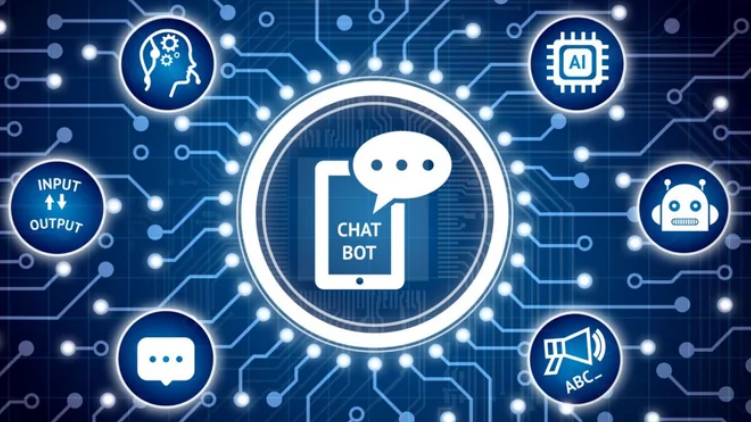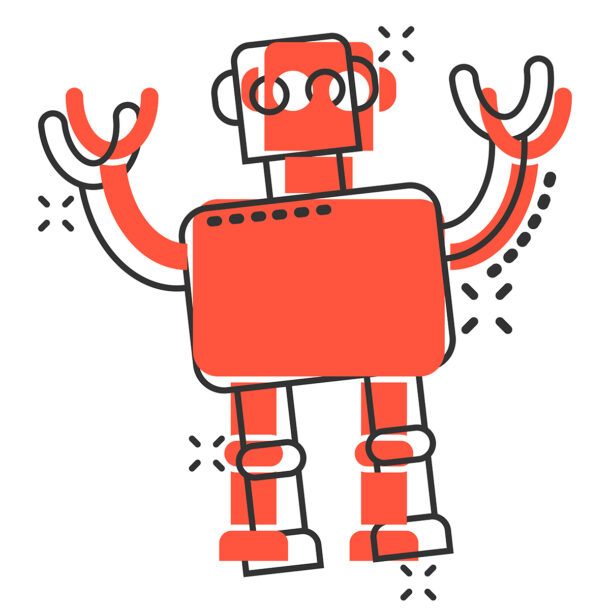Introduction to AI-Powered Chatbots
AI-powered chatbots, the marvels of modern technology, are computer programs designed to simulate human conversation using artificial intelligence. These digital assistants interpret and process user requests, providing immediate responses that mimic human interaction.
The benefits of using AI-powered chatbots are multifold. They not only handle multiple customer queries simultaneously but also operate around the clock, ensuring no customer query goes unanswered. This leads to increased efficiency and improved customer satisfaction.
An integral element of these chatbots is conversational self-service. It allows customers to resolve their issues independently without needing human intervention. By providing answers to frequently asked questions or guiding customers through complex procedures, these chatbots ensure a streamlined user experience.
A critical aspect of AI-powered chatbot operation is natural language processing (NLP). NLP enables these bots to understand, interpret, and generate human language in a value-giving manner. It helps in filtering out the relevant information from user requests and aids in delivering appropriate responses.
The role of artificial intelligence in chatbot technology cannot be understated. It is the driving force that allows chatbots to learn from past interactions, improve their responses, and deliver personalized service to each user. Artificial intelligence enables these bots to go beyond predefined scripts and offer solutions based on the context of the conversation.
AI-powered chatbots represent a significant advancement in customer service operations, driving efficiency and enhancing user experience. The blend of conversational self-service, NLP, and AI creates a powerful tool poised to revolutionize customer interaction across various industries.
Working Mechanism of AI-Powered Chatbots
At the heart of AI-Powered chatbots lies a crucial process known as machine learning. This is an application of artificial intelligence that equips systems with the ability to learn and improve from experience without being explicitly programmed.
Machine Learning in Chatbot Functionality
Machine learning operates on the premise of data analysis, using models to identify patterns and make decisions with minimal human intervention. Chatbots powered by machine learning algorithms are capable of understanding customer queries, interpreting different contexts, and delivering personalized responses.
Scripted Vs Rule-Based Chatbots
In essence, chatbot technology can be sectioned into two categories: scripted (or sequential) chatbots and rule-based chatbots.
- Scripted Chatbots: These bots operate on a predefined set of rules. They follow a specific flowchart or script, limiting their interactions to a set pathway.
- Rule-Based Chatbots: These bots are more dynamic, as they function based on machine learning. Rule-based bots can handle unanticipated queries better than their scripted counterparts, thanks to their self-learning capabilities.
The primary distinction between these two lies in the range and complexity of tasks they can perform. Scripted bots are more suited for straightforward tasks while rule-based bots excel at handling complex, multi-layered interactions.
Learning and Improvement Over Time
AI-powered chatbots exhibit a remarkable trait – the ability to learn and adapt over time. The underlying machine learning algorithms enable these virtual assistants to analyze past interactions and improve future responses accordingly.
For instance, if a customer uses a specific slang or abbreviation frequently, over time, the chatbot will recognize this pattern and understand its meaning without any manual input. This continuous learning process results in an increasingly intelligent system capable of delivering superior customer service experiences.
As we delve deeper into the details of AI-powered chatbot architecture in the next section, it will become evident how this intricate mechanism works in unison to bring about efficient conversational self-service.
Components of AI-Powered Chatbot Architecture
Chatbot Architecture – A Closer Look
Chatbot architecture refers to the structured framework that enables the functioning of a chatbot. It acts as the backbone, holding together various elements that allow a chatbot to interact, learn, and respond. In essence, it’s a blueprint outlining how different components of a chatbot interact with each other and with external systems.
The Key Ingredients in Bot Development
Building an AI-powered chatbot requires several key components. Each plays a crucial role in enabling the chatbot to understand and respond intelligently to user inputs:
- User Interface (UI): This is the front-end part of the bot where human-bot interaction takes place. It can be text-based or voice-enabled.
- Natural Language Understanding (NLU) and Natural Language Processing (NLP): NLU helps bots comprehend user inputs, while NLP deciphers human language into structured data that machines can understand.
- Dialog Management: This component orchestrates the conversation flow between the user and the bot.
- Backend Integration: This links the chatbot with existing business systems or databases to fetch necessary information.
- Machine Learning Algorithms: These enable the bot to learn from previous interactions and improve its responses over time.
NLU – The Heart of Intelligent Bots
Notably, Natural Language Understanding (NLU) sits at the very heart of intelligent bots. It’s through NLU that AI-powered chatbots can grasp nuances in human language, interpret context, handle ambiguity, and deliver relevant responses.
Without NLU, bots would fail to understand variances in user input – they would remain incapable of comprehending synonyms, handling typos or understanding implicit requests. Thus, NLU is fundamental for making bots more ‘human-like’ and less ‘mechanical’.
In this modern era where seamless user experience is paramount, ensuring your chatbot has a robust architecture fortified by competent NLU capabilities can indeed make a world of difference.
Implementing Conversational Self-Service with AI Chatbots
AI chatbots have revolutionized customer service, introducing a new dimension of self-service that is replete with numerous benefits. The first is the ability to provide 24/7 customer service. Unlike human agents, chatbots never sleep or take breaks. They are always available to help customers, irrespective of the time zone or holiday schedule.
The second advantage is scalability. While a single human agent can only handle one customer at a time, an AI chatbot can simultaneously handle multiple queries without any drop in efficiency or effectiveness. This drastically reduces waiting times and boosts customer satisfaction.
Another benefit is cost efficiency. AI-powered chatbots reduce the need for large customer service teams, saving businesses significant operational costs.
Automation plays a critical role in these advantages. AI chatbots automate repetitive tasks, freeing up human agents to focus on complex issues that require empathy and emotional intelligence – aspects where humans still outshine machines.
AI chatbots are designed to engage customers in natural language conversations, answer their queries, and assist them in completing tasks. With each interaction, they improve their understanding and response to human language through machine learning algorithms and natural language processing (NLP) techniques.
The overall customer experience is enhanced by the personalization offered by AI-powered chatbots. Each interaction is tailored to the individual customer’s needs and preferences. Over time, the chatbot learns more about each customer’s behavior and can offer personalized suggestions and solutions.
In addition to providing answers to frequently asked questions (FAQs), modern AI chatbots can help users make purchases, book appointments, provide recommendations based on past behavior, and even offer technical support.
Yet, while technology has made significant strides in recent years, it’s important to remember that perfecting conversational self-service doesn’t happen overnight. It requires continuous learning from AI chatbots side and regular tuning and updating from developers’ end to ensure seamless communication between bots and humans.
The next section will delve into real-world applications of AI-powered chatbots across different industries – from e-commerce to healthcare.
Applications of AI-Powered Chatbots
AI-powered chatbots have found diverse applications across numerous sectors, transforming the way organizations interact with their customers and streamline their operations. Here, we delve into three key areas where these smart conversational agents are leaving a significant impact: e-commerce, medical consultations, and business continuity plans.
Enhancing E-Commerce Experiences with AI-Powered Chatbots
AI-powered chatbots in e-commerce are not just customer service tools, they are also sales assistants guiding customers through their buying journey. They help shoppers find products based on their preferences, answer product-related queries, give recommendations, handle payments, and even track deliveries.
Case study: H&M’s Kik Bot H&M’s Kik bot is an excellent example of how an AI-powered chatbot can revolutionize the shopping experience. This bot interacts with customers to understand their style preferences then recommends outfits accordingly.
Virtual Medical Consultations Using AI Chatbots
In the healthcare sector, AI chatbots play a crucial role in offering medical advice and preliminary diagnoses based on symptom descriptions provided by patients.
Case study: Babylon Health Babylon Health uses an AI chatbot to provide medical consultations. It asks users about their symptoms and then uses its vast medical database to provide possible diagnoses.
Utilizing Chatbots in Business Continuity Plans
Business continuity plans ensure a company can continue operating during a crisis or disruption. AI-powered chatbots enhance these plans by maintaining communication with customers when human staff may be unavailable.
Case study: IBM Watson Assistant IBM Watson Assistant is used by businesses during disruptions to handle large volumes of customer inquiries quickly and efficiently. It can be trained to understand specific industry language and integrate with existing business systems for seamless service delivery.
E-commerce experiences, virtual medical consultations, and business continuity plans represent just a fraction of the potential applications of AI-powered chatbots. As technology advances, so too will the ways in which these digital assistants can be utilized.
Challenges and Future of AI-Powered Chatbots
AI-powered chatbots have proven their efficiency across various sectors; however, they face a number of challenges.
- Understanding Context: A significant challenge for AI chatbots is understanding the context and nuances of human conversation. Sarcasm, local idioms, or colloquial language can often puzzle chatbots, leading to inappropriate responses.
- Data Privacy: With increasing regulations concerning data privacy, ensuring that AI chatbots collect and process user information in a secure and compliant manner is paramount.
- Dependency on pre-defined scripts: Rule-based or scripted chatbots are dependent on pre-set responses. If a query falls outside these guidelines, the chatbot may fail to provide an accurate response.
Despite these hurdles, advancements in technology offer promising solutions. A notable mention is deep learning. Deep learning enables chatbots to learn from previous interactions and improve their response accuracy over time. It helps chatbots understand the context, enabling them to deliver more nuanced and relevant replies.
Natural Language Processing (NLP) engines are at the heart of AI-powered chatbots. Recent advancements in NLP engines have significantly improved the ability of chatbots to comprehend complex human language constructs. Improved NLP engines can decipher multiple languages, various dialects, and even understand slang or colloquial speech.
The future holds immense potential for AI-powered chatbots. With continuous advancements in deep learning algorithms and NLP technologies, one can expect more accurate, efficient, and context-aware chatbot interactions. This evolution will not only enhance customer experiences but also open new avenues for using AI-powered chatbots across diverse fields.
Conclusion
AI-powered chatbots, as explored throughout this article, hold immense potential in revolutionizing several sectors, including e-commerce, healthcare, and business continuity planning. These intelligent tools leverage natural language processing (NLP) and machine learning to offer superior customer experiences and automate mundane tasks.
Key Points Recap:
- AI-powered chatbots utilize NLP to comprehend human language and respond appropriately.
- Machine learning aids these chatbots in improving their responses over time.
- They offer considerable benefits such as automating customer interactions and enhancing self-service.
- Despite certain challenges, advancements in deep learning and NLP engines are paving the way for more efficient and effective chatbots.
Looking ahead, AI-powered chatbots could become increasingly prevalent. Their potential lies not only in streamlining customer service but also in creating meaningful and personalized interactions. As technology continues to advance, these chatbots are expected to become more intuitive, understanding intricate human emotions and responses.
The Future Potential:
With improvements in AI technology, the future of AI-powered chatbots appears promising. They will likely play an integral role across various domains – from providing virtual medical consultations to becoming indispensable components of business continuity plans. As they continue to learn and evolve, their ability to understand complex requests and deliver precise responses will significantly improve, leading to a more seamless interaction between humans and machines.
Next Steps
If you’d like to find out more about AI Powered Chatbots visit our website, or book a demo direct with us.


